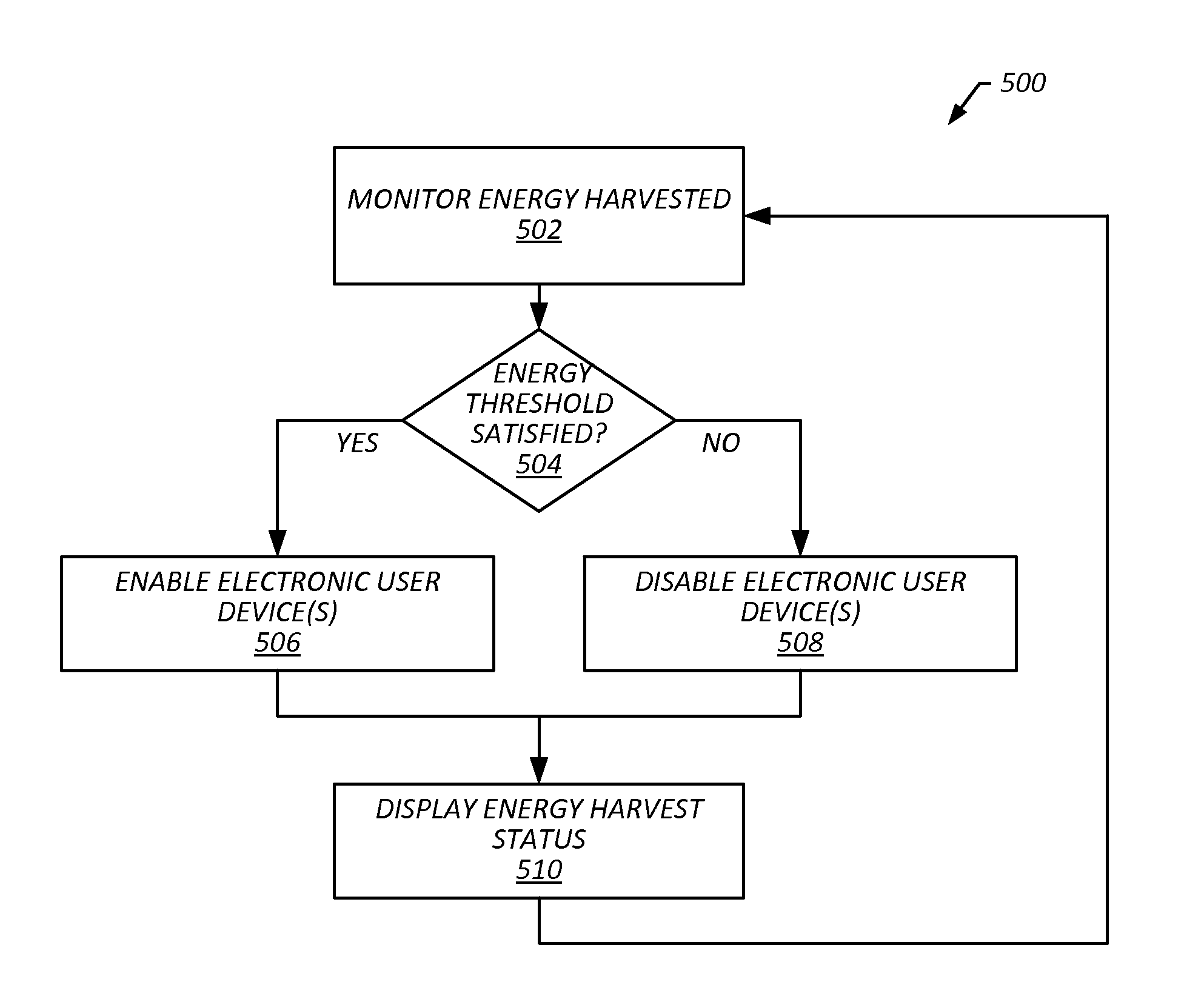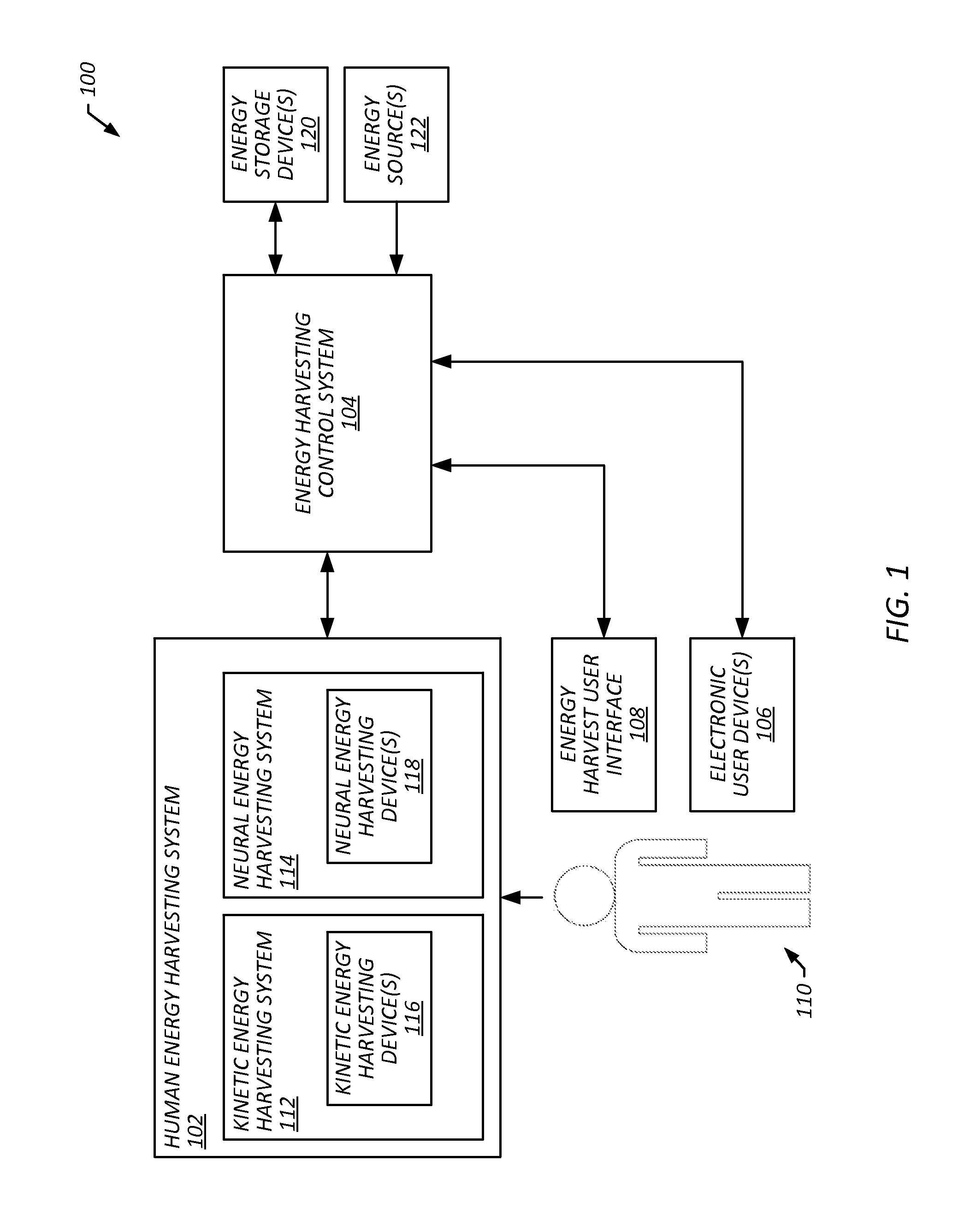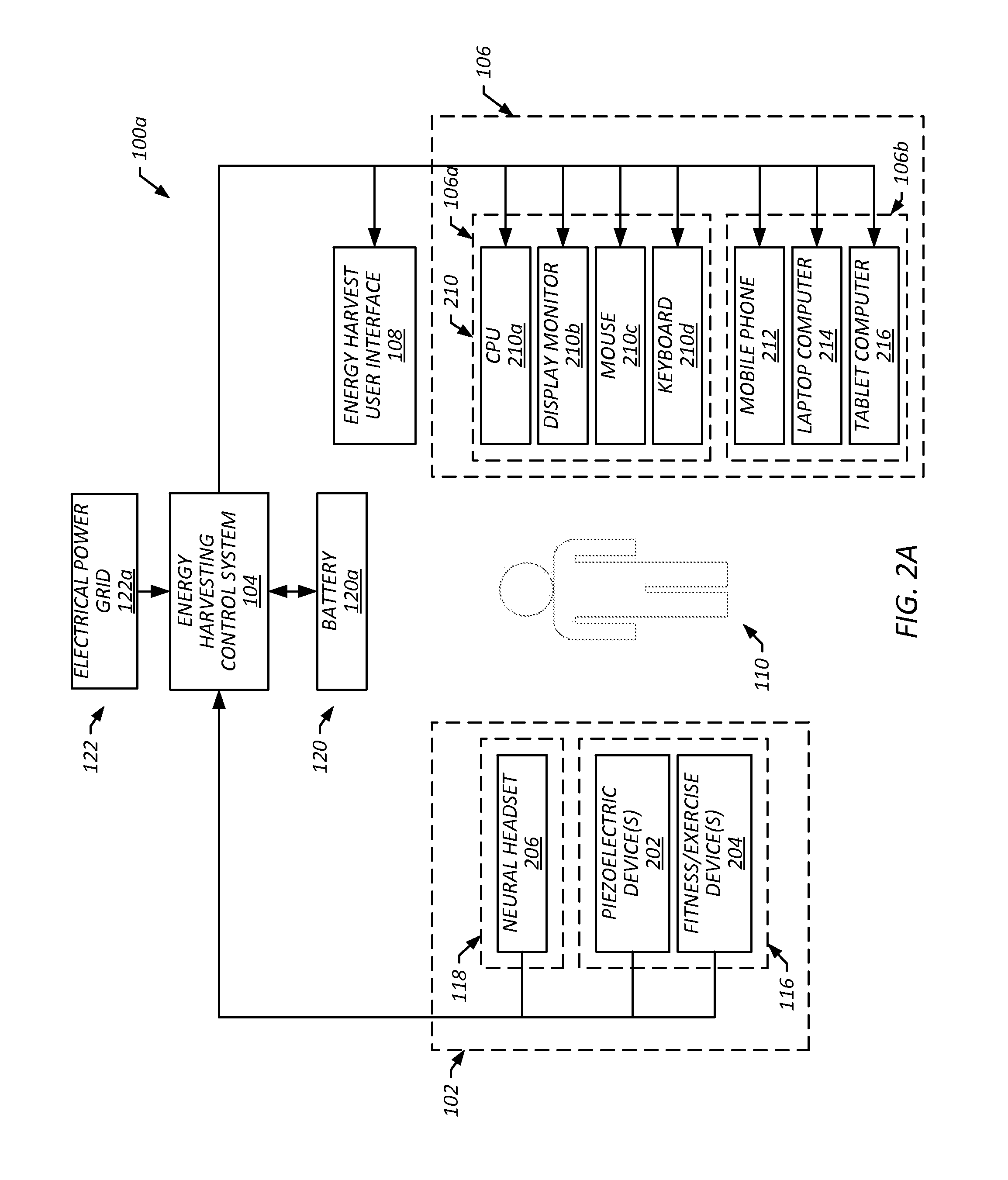Systems, Computer Medium and Computer-Implemented Methods for Harvesting Human Energy in the Workplace
a technology of human energy and workplace, applied in the field of workplace wellness and energy conservation programs, can solve the problems of power consumption, lack of additional incentives to encourage employees to engage in a healthier lifestyle, and inability to engage in exercise in the office throughout the workday, so as to improve workplace wellness and energy efficiency in the workplace, improve energy efficiency, and reduce power consumption
- Summary
- Abstract
- Description
- Claims
- Application Information
AI Technical Summary
Benefits of technology
Problems solved by technology
Method used
Image
Examples
Embodiment Construction
[0031]Provided herein are embodiments that include workplace energy harvesting systems and methods that harvest human energy and encourage employees to engage in activities while working Harvesting human energy may include capturing energy that is expended by a person such that it can be repurposed for another use. For example, harvesting energy generated by a user walking on a treadmill can include capturing the energy generated by the resulting movement of the belt as the user walks in place on the belt, and using that energy to power another device, such as a computer, and / or storing that energy in a battery for later use. In some embodiments, a workplace energy harvesting system includes electronic user devices (e.g., a computer, a mobile phone, a tablet computer, a laptop computer and / or the like), a human energy harvesting system, an energy harvesting control system and / or an energy harvest user interface.
[0032]In some embodiments, a human energy harvesting system includes a k...
PUM
 Login to View More
Login to View More Abstract
Description
Claims
Application Information
 Login to View More
Login to View More - R&D
- Intellectual Property
- Life Sciences
- Materials
- Tech Scout
- Unparalleled Data Quality
- Higher Quality Content
- 60% Fewer Hallucinations
Browse by: Latest US Patents, China's latest patents, Technical Efficacy Thesaurus, Application Domain, Technology Topic, Popular Technical Reports.
© 2025 PatSnap. All rights reserved.Legal|Privacy policy|Modern Slavery Act Transparency Statement|Sitemap|About US| Contact US: help@patsnap.com



